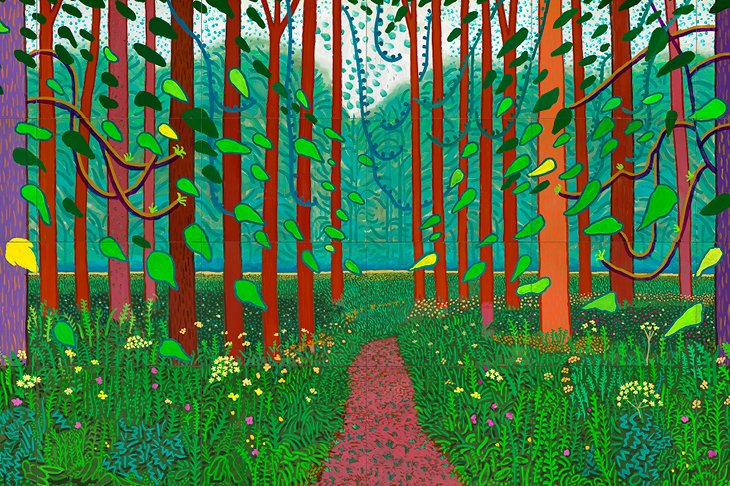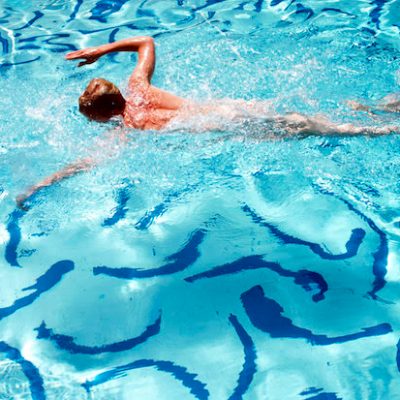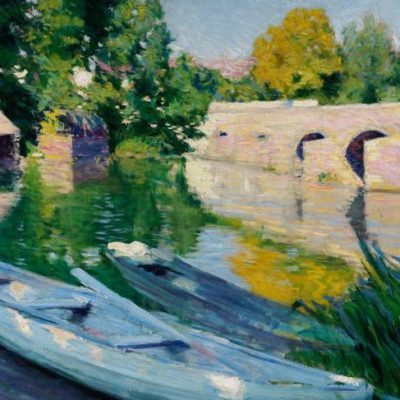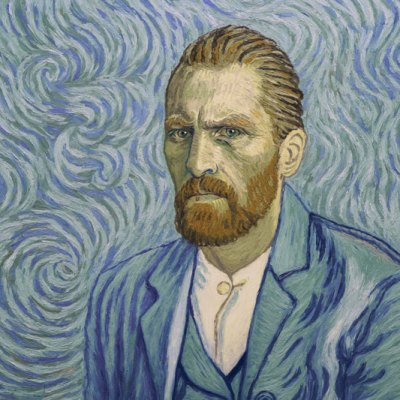‘Matisse once said: two kilos of blue are bluer than one kilo of blue. Which is a very good remark, but in green it must be three kilos.’ So says David Hockney in an interview with Hans den Hartog Jager, published for the first time in the exhibition catalogue for ‘Hockney – Van Gogh: The Joy of Nature’ at the Van Gogh Museum.
It is in turn a good remark, and indicates something important about the materiality, the thingliness of colour in Hockney’s imagination. In his visual world, increasing the intensity of colours has often been the way to see them truly. In the late works on display in Amsterdam, Yorkshire landscapes become tropical, the ground bright orange, tree trunks purple. Blue lianas sprout in Woldgate Woods. ‘Hockney – Van Gogh’ persuasively demonstrates how this sensibility is indebted to the work of Van Gogh, whose colours grew more intense as he headed south, and who shared a sense of colour as a means of grasping the texture of the real. In the same interview, Hockney says of his first encounter with Van Gogh’s work, at the Manchester City Art Gallery in 1955: ‘I do remember thinking he must have been quite a rich artist. He could use two whole tubes of blue to paint the sky in one painting.’
Field with Irises near Arles (1888), Vincent van Gogh. Van Gogh Museum, Amsterdam (Vincent van Gogh Foundation)

The scale of works such as The Arrival of Spring in Woldgate, East Yorkshire in 2011 (twenty eleven) – a painting 32 feet wide, and made up of 32 individual canvases – makes clear that Hockney is a very rich artist indeed. The technical possibilities for the realisation of his vision are now almost limitless. Alongside the large-scale canvases and watercolours, this exhibition includes 20 iPad drawings; The Four Seasons, Woldgate Woods (Spring 2011, Summer 2010, Autumn 2010, Winter 2010), a multi-perspective video installation work in which nine cameras, rigged at different angles, were driven through the same stretch of Yorkshire woodland at the mid-points of the four seasons, with the four videos playing synchronistically on facing walls; and the ‘photographic drawing’ In the Studio, created with the help of 3D-scanning technology.
Some of these works seem more successful than others. But what happens when an artist so invested in colour as material substance moves into forms of digital reproduction? The remarkable thing about the iPad drawings, here each printed on four large sheets of paper, is how energetically they manage to achieve texture in their depthless surfaces. The inventiveness of Hockney’s mark-making bursts out of the two videos, each one seven minutes long and completely captivating, in which the viewer can watch his iPad drawings being built up, mark by mark, in a greatly sped-up sequence. Passages of colour are layered across each other with great gusto; transparencies are stippled in; shapes emerge from the purples, blues and oranges and transform; plants and weeds are marked in scribble-scrabble white lines; and suddenly the work is fully realised for a few seconds, before the screen goes black, and the next drawing starts to build itself up.
The Garden of Saint Paul’s Hospital (‘Leaf Fall’) (1889), Vincent van Gogh. Van Gogh Museum, Amsterdam (Vincent van Gogh Foundation)

In some ways I regret the absence of human figures in most of the works of Hockney’s return to Yorkshire. This exhibition makes much of the formal echo of Van Gogh’s The Garden of Saint Paul’s Hospital (‘Leaf-Fall’) in the slalom tree-trunks in The Arrival of Spring in Woldgate, but where Hockney’s Woldgate is depopulated, Van Gogh’s landscape is made richer and stranger by the presence of the solitary walker in his canvas. The iPad videos, however, manage to reinsert the living hand of the artist into these works, and perhaps the point of them is to show the continuities between the energies and eccentricities of human and non-human life-forms. In spring, Hockney says, ‘Everything emerges and straightens up. It’s like nature’s erection.’
The Arrival of Spring in Woldgate, East Yorkshire in 2011 (twenty eleven), David Hockney. Musée national d’art moderne – Centre de création industrielle. Photo: Richard Schmidt, Centre Pompidou, Paris; © David Hockney

‘Hockney – Van Gogh: The Joy of Nature’ is at the Van Gogh Museum, Amsterdam, until 26 May.




